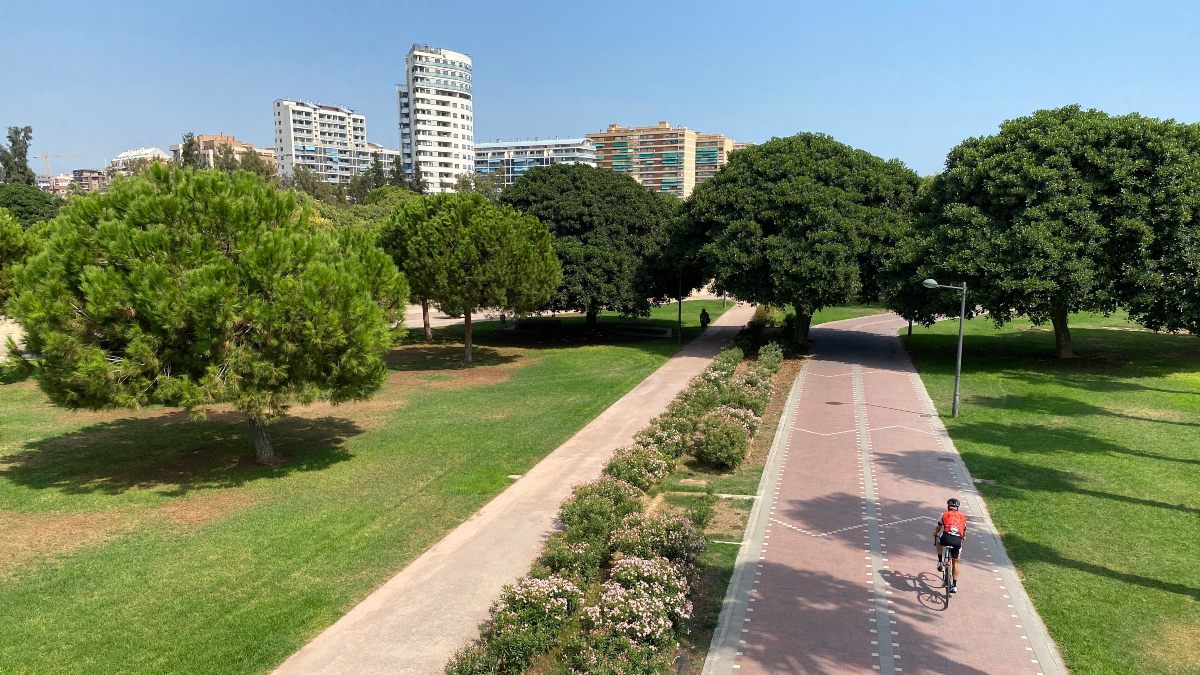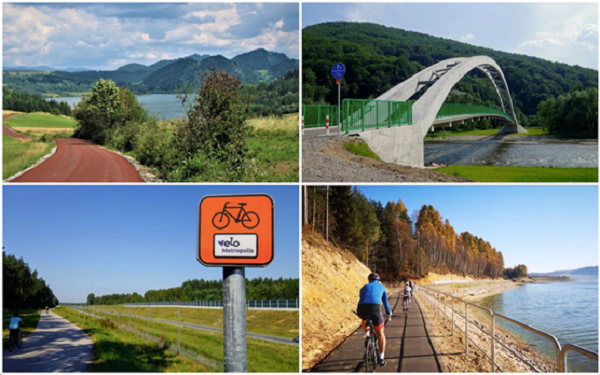
New EU funding regulation creates cycling investment opportunities worth billions of euro
An updated regulation for EU Structural Funds has demanded increased levels of investment from cities and regions towards sustainable mobility, a major opportunity to attain more funding for cycling infrastructure.
In June 2021, after more than three years of negotiations, the European Parliament and Council agreed upon a new funding regulation for the 2021-27 Multiannual Financial Framework (MFF). The new regulation concerns two EU Structural Funds which are traditionally the primary sources of EU investments for cycle projects: the European Regional Development Fund (ERDF) and the Cohesion Fund (CF).
Under this new regulation, specific changes that benefit cycling have been introduced to the funds’ policy objectives (PO), such as sustainable multimodal urban mobility moving higher up on the list of priorities (it now sits at “PO 2.8: Promoting sustainable multimodal urban mobility, as part of a transition to a net zero carbon economy”). With Managing Authorities (MAs) having to spend at least 30% of their financial budgets in pursuit of PO 2, this requirement presents a fantastic opportunity for more money to be invested towards cycling.
The new regulation also requires that at least 8% of ERDF resources at national level under the investment for jobs and growth goal shall be allocated to sustainable urban development (Article 11.2). In addition, it will also support the “European Urban Initiative” (Article 12) to establish a closer link to the local level.
Meanwhile, other policy objectives (PO 2.7, PO 3.2, PO 4.6, PO 5.1, PO 5.2) have opened up a host of new funding opportunities for cycling. Potential beneficiaries will be cycle routes along “green infrastructure” (eg for cycle paths alongside renatured rivers), regional cycle route networks, and cycle tourism projects, such as the EuroVelo long-distance cycle routes (see table below).
For investments made under PO 2, data on “Output Indicator 58: Dedicated cycling infrastructure supported” and “Results Indicator 64: Annual users of dedicated cycling infrastructure” will have to be collected. Unfortunately, these indicators do not apply to investments done under other policy objectives. In other words, we will not have a complete picture of the impact achieved through EU investments on cycling by the end of this EU investment cycle in 2027.

Image 1: Example of good cycling practices in Poland, which received EU funding during the 2014-20 MFF
Growing focus on cycling
Approximately €80 billion is invested by the EU in transport projects from its various funds over 7-year funding periods. Of this, a growing share has been channeled into cycling. While some €700 million went into cycle projects in the years 2007-13, that figure grew to €2-2.5 billion in the following period of 2014-20. The exact figure we will only know by 2023.
Though the European Cyclists’ Federation (ECF) strongly welcomes this positive development, it is still a far cry from what we consider as a just share for cycling from EU transport investments. Instead, ECF recommends a share of at least €6 billion in order to achieve effective modal shift. So, the question now is, how can we achieve this target?
Stronger focus on urban mobility
While countries and regions decide themselves how to spend the money received from ERDF and CF, investments must be in accordance with predetermined EU regulations and certain overall requirements. For example, according to EU regulation, operations under the ERDF are expected to contribute 30% of the fund’s overall financial envelope to climate objectives. Therefore, regulation changes, such as the one mentioned above, will play a highly influential role in ensuring more investment is dedicated to cycling.
Overview table
|
Policy objectives |
Indicators |
Type of project funded |
Thematic concentration |
|
2.7 Enhancing protection and preservation of nature, biodiversity and green infrastructure, including in the urban areas, and reducing all forms of pollution |
Output indicators RCO 58: “Dedicated cycling infrastructure supported”
Results indicator RCR 64: “Annual users of dedicated cycling infrastructure” |
Eg bike path alongside renatured rivers |
MAs must spend at least 30% of their financial budgets in pursuit of PO 2 |
|
2.8 Promoting sustainable multimodal urban mobility, as part of a transition toPaste a net zero carbon economy |
Any type of (peri-) urban cycle infrastructure, eg urban cycle route networks, bike parking at public transport hubs
|
||
|
3.2 Developing and enhancing sustainable, climate resilient, intelligent and intermodal national, regional and local mobility, including improved access to TEN-T and cross-border mobility. |
n/a |
Any type of non-urban cycle infrastructure, eg regional and national cycle route networks, cycle highways between cities
|
n/a |
|
4.6, 5.1 and 5.2 Sustainable tourism |
n/a |
Any type of touristic cycle product, eg cycling in nature parks/ forests, bed & bike services, touristic apps
|
n/a |
Next steps: Negotiating Partnership Agreements and Operational Programmes
The ERDF and CF regulation is the basis for negotiating the 27 Partnership Agreements (PAs) which are financial contracts between the European Commission and each of the 27 EU member states. On the basis of the PAs, over 200 Operational Programmes (OPs) will be developed, translating the general objectives of the regulation into specific thematic or regional policies. These negotiations, both on PAs as well as OPs, are still ongoing in parallel and shall be completed by the end of the year, Commission sources tell us.
Image 2: Cycle highways in Flanders, Belgium, which received EU funding during the 2014-20 MFF
Explicit references to cycling
Stakeholders who intend to secure investments for cycling from these funds are best advised to contact their MAs as soon as possible and lobby for the inclusion of explicit references to cycling in the PAs, as well as for concrete investments with detailed output indicators and budget allocations in the OPs.
Ideally, these investments are embedded and strategically aligned with regional and/or national cycling strategies to provide proof for the long-term thinking. Stakeholders who are unsure about their MAs and past OPs are advised to consult the EU Funds Observatory for Cycling that ECF put together for the past funding period 2014 – 2020.
Still have questions? Check out our guide for unlocking cycle investments from EU Structural Funds
In 2020, ECF published 27 country-specific guides for unlocking cycle investments from EU Structural Funds, one for each member state. Each provides detailed information on the regulatory framework, the process, as well as highlighting good practice examples of concrete cycle projects financed with EU funds as well as examples for successfully including references to cycling in programming documents.
As part of the Interreg EU CYCLE project, ECF has developed and recently published a more detailed and in-depth “Integrated Cycling Planning Guide”, which also includes a chapter on how to plan a regional cycle network.
Also of interest
Investments for cycle projects from EU resources are also possible through the Recovery and Resilience Facility. ECF analysis shows that about €1.7 billion will be invested on cycling. More information here.
Sources: - REGULATION (EU) 2021/1058 OF THE EUROPEAN PARLIAMENT AND OF THE COUNCIL of 24 June 2021 on the European Regional Development Fund and on the Cohesion Fund - ECF Unlocking EU Funds For Cycling Investments: https://www.ecf.com/unlocking-cycle-investment - EU CYCLE Integrated Cycling Planning guide: https://www.interregeurope.eu/fileadmin/user_upload/tx_tevprojects/library/file_1630597001.pdf - ECF EU Funds Observatory for Cycling: https://ecf.com/what-we-do/european-funding/eu-funds-observatory-cycling-2014-2020
Regions:
Contact the author
Recent news!
Upcoming events
Contact Us
Avenue des Arts, 7-8
Postal address: Rue de la Charité, 22
1210 Brussels, Belgium










